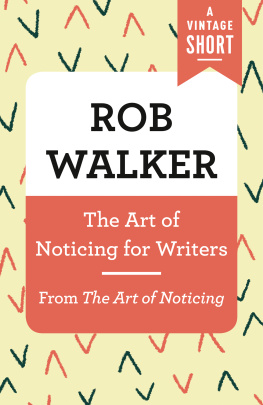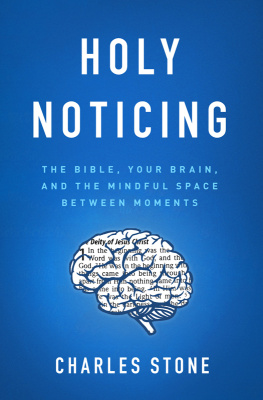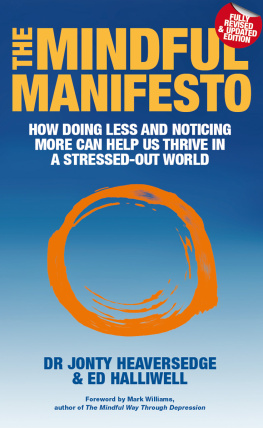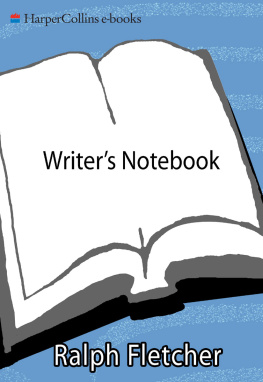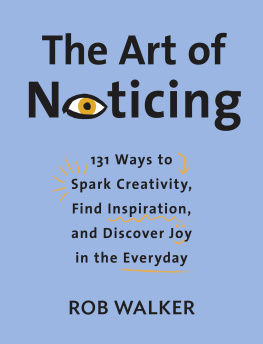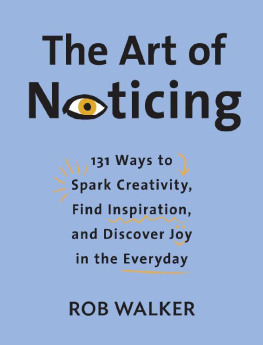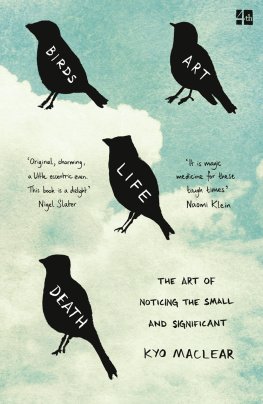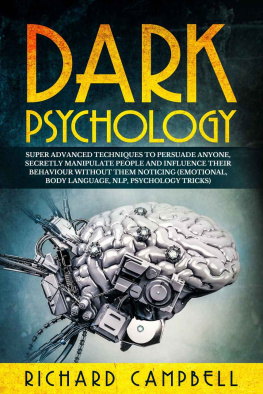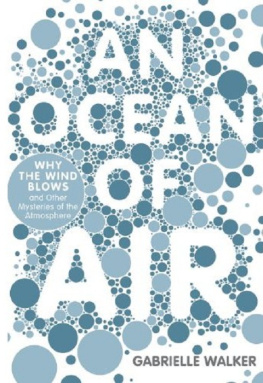ROB WALKER. - ART OF NOTICING FOR WRITERS;FROM THE ART OF NOTICING
Here you can read online ROB WALKER. - ART OF NOTICING FOR WRITERS;FROM THE ART OF NOTICING full text of the book (entire story) in english for free. Download pdf and epub, get meaning, cover and reviews about this ebook. year: 2019, publisher: VINTAGE, genre: Art. Description of the work, (preface) as well as reviews are available. Best literature library LitArk.com created for fans of good reading and offers a wide selection of genres:
Romance novel
Science fiction
Adventure
Detective
Science
History
Home and family
Prose
Art
Politics
Computer
Non-fiction
Religion
Business
Children
Humor
Choose a favorite category and find really read worthwhile books. Enjoy immersion in the world of imagination, feel the emotions of the characters or learn something new for yourself, make an fascinating discovery.
- Book:ART OF NOTICING FOR WRITERS;FROM THE ART OF NOTICING
- Author:
- Publisher:VINTAGE
- Genre:
- Year:2019
- Rating:3 / 5
- Favourites:Add to favourites
- Your mark:
- 60
- 1
- 2
- 3
- 4
- 5
ART OF NOTICING FOR WRITERS;FROM THE ART OF NOTICING: summary, description and annotation
We offer to read an annotation, description, summary or preface (depends on what the author of the book "ART OF NOTICING FOR WRITERS;FROM THE ART OF NOTICING" wrote himself). If you haven't found the necessary information about the book — write in the comments, we will try to find it.
ROB WALKER.: author's other books
Who wrote ART OF NOTICING FOR WRITERS;FROM THE ART OF NOTICING? Find out the surname, the name of the author of the book and a list of all author's works by series.
ART OF NOTICING FOR WRITERS;FROM THE ART OF NOTICING — read online for free the complete book (whole text) full work
Below is the text of the book, divided by pages. System saving the place of the last page read, allows you to conveniently read the book "ART OF NOTICING FOR WRITERS;FROM THE ART OF NOTICING" online for free, without having to search again every time where you left off. Put a bookmark, and you can go to the page where you finished reading at any time.
Font size:
Interval:
Bookmark:
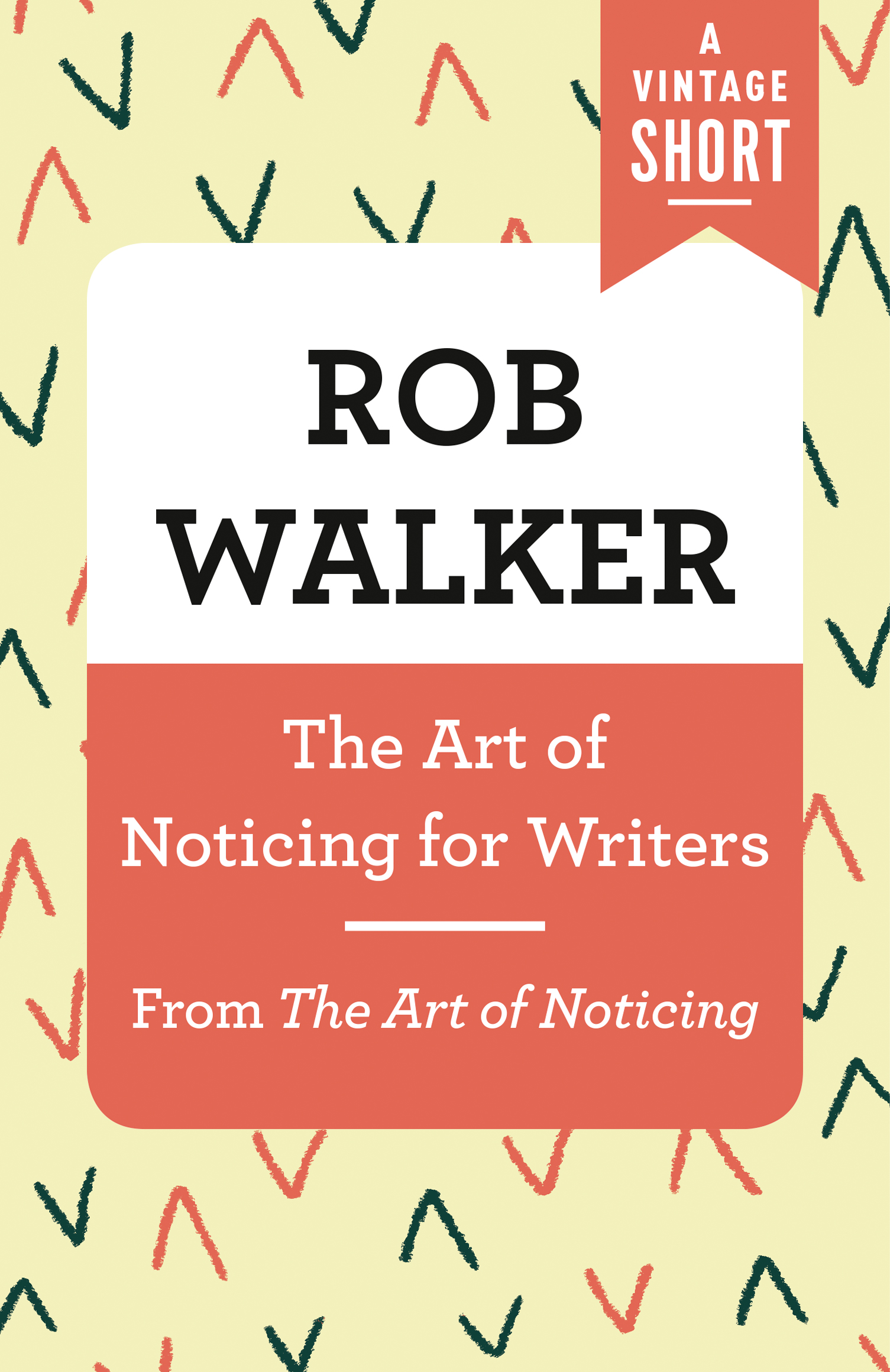
Rob Walker
Rob Walker is a columnist and contributes to a wide variety of publications including The New York Times, The Atlantic, NewYorker.com, The Boston Globe, and Bloomberg Businessweek. He is the author of Buying In and Significant Objects (coedited with Joshua Glenn) and on the faculty of the Products of Design MFA program at the School of Visual Arts. He lives in New Orleans.
www.robwalker.net
A LSO BY R OB W ALKER
The Art of Noticing
Significant Objects (coedited with Joshua Glenn)
Buying In
Letters from New Orleans
A Vintage Short
Vintage Books
A Division of Penguin Random House LLC
New York
Copyright 2019 by Rob Walker
All rights reserved. Published in the United States by Vintage Books, a division of Penguin Random House LLC, New York, and in Canada by Penguin Random House Canada Limited, Toronto. Originally published in hardcover in the United States by Alfred A. Knopf, a division of Penguin Random House LLC, New York, in 2019.
Vintage and colophon are registered trademarks of Penguin Random House LLC.
The Cataloging-in-Publication Data for The Art of Noticing for Writers is available from the Library of Congress.
Vintage eShort ISBN9780593082348
Cover design and illustration by Madeline Partner
www.vintagebooks.com
v5.4
a
In an interview late in his life, Saul Bellow explained that over the course of his celebrated career he had learned to experience everyday life from the perspective, essentially, of an alien. Here's how he described the ideal alien-level mind-set he sought to inhabit: Ive never seen the world before.
This, Bellow explained, allowed him to regard everything he encountered as if it were a thrilling discovery, a pure revelation, a beautiful, marvelous gift. Enchanting reality! Such openness to experience the moment, reveling in what others take for granted being a first-class noticer was, to Bellow, essential to the job of the writer.
Being a first-class noticer, and cultivating the ability to attend to what others overlook, is crucial to any creative process. The scientist, the entrepreneur, the photographer, the coach, each relies on the clarity to notice that which previously seemed invisible to everybody else. But perhaps it is particularly crucial for a writer.
The exercises and provocations and prompts that follow are designed to help you become a first-class noticer yourself. But theres a deeper goal in that: to cultivate an original perspective, a distinct point of view to break from the pack and notice what the herd has missed. Every day is filled with opportunities to be amazed, surprised, appalled to experience the enchanting in the everyday, just like Bellow's imagined alien.
For Saul Bellow, Seeing the Earth With Fresh Eyes, by Mel Gussow, May 26, 1997, The New York Times. http://www.nytimes.com/books/00/04/23/specials/bellow-gussow97.html Accessed October 25, 2017

W HEN GEOFF MANAUGH , the author of A Burglars Guide to the City, walks into a bank or a restaurant, he thinks: If a crime was to occur herea heist, a robberywho would be involved? That guy whos sitting alone in the corner? The one milling around outside? Whats about to happen here?
Speculating about what might happen next requires a determined focus on key details. Manaugh compares it to a game. Check out the people at a public event: Who looks familiar and why? Take in the books on the shelves in a strangers house: What interests are revealed? When house-hunting in earthquake-prone Los Angeles, Manaugh asked himself: Which part of the structure I am looking atthe wood trim, the uneven framing, or the loose floorboardsoffers a clue about what would collapse first should the worst occur?
Manaugh admits that something about this way of thinking may sound slightly dark. But, he adds:
I tend to notice things that come in handy later.
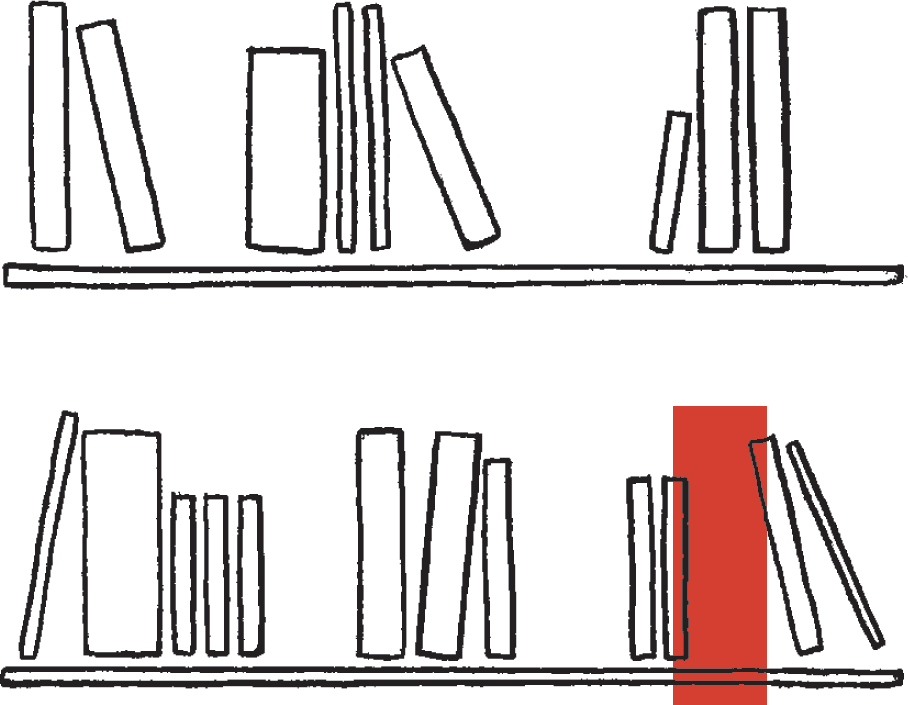

S OCIAL SCIENTISTS carefully observe the facts of the world. But that may just be a starting point. Its not just about observing what a person does, says Dan Ariely, a professor of psychology and behavioral economics at Duke University and the author of Predictably Irrational, among other books. Its trying to understand the reasons behind that.
Arielys research focuses on how to tweak human behaviorand that depends on understanding what shapes behavior in the first place. Lets say we go to a bar, and we see people that are dating, Ariely suggests. We also notice that the place is noisy, that its dark, that its crowded, that theres alcohol: all sound observations. But now, as a social scientist, I want to think of it like a Newtonian physics problem, he continues, and say: What are the forces at work? Whats pulling people in different directions that is showing up as an interest in being in this place?
He offers a few examples: Maybe going to a noisy place helps people overcome moments of awkward silence, he says. Maybe being in a loud place allows people to sit closer to each other, and from time to time whisper or talk in each others ear. Maybe being around a lot of other people offers some sense of safetybut also enough activity to keep one from feeling like the center of attention. And so forth.
These forces are, strictly speaking, invisible. Were talking about mind-sets and feelings, instincts that even the individuals involved may not be consciously aware of.
Invisible forces are a fun challenge to seek outparticularly in a situation that involves lots of people drawn (or thrown) together, whether at a party or at the Department of Motor Vehicles.
The relation between what we see and what we know is never settled. Each evening we see the sun set. We know that the earth is turning away from it. Yet the knowledge, the explanation, never quite fits the sight.
JOHN BERGER

M Y FRIEND Marc Weidenbaum is a music writer, among other things, and he has a very interesting personal ritual. I like to review everyday sounds, he explains, as if they were commercial music releases. The whir of an electric toothbrush, the rattly hum of an old taxi, the moan of a foghorn, the purr of a cat: Hell think up a description of the sound, the context in which it occurred, and whatever continuity its part of (cultural, technological, regional, aesthetic, etc.), he explains. I describe how it functions as a sonic event. He collects his everyday sound reviews on his site Disquiet.com.
Font size:
Interval:
Bookmark:
Similar books «ART OF NOTICING FOR WRITERS;FROM THE ART OF NOTICING»
Look at similar books to ART OF NOTICING FOR WRITERS;FROM THE ART OF NOTICING. We have selected literature similar in name and meaning in the hope of providing readers with more options to find new, interesting, not yet read works.
Discussion, reviews of the book ART OF NOTICING FOR WRITERS;FROM THE ART OF NOTICING and just readers' own opinions. Leave your comments, write what you think about the work, its meaning or the main characters. Specify what exactly you liked and what you didn't like, and why you think so.

